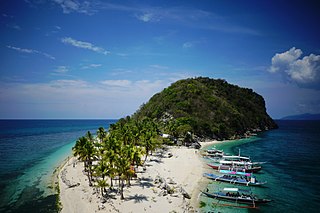This article needs additional citations for verification .(February 2013) |
Janiuay | |
|---|---|
| Municipality of Janiuay | |
 Janiuay Cemetery | |
 Map of Iloilo with Janiuay highlighted | |
| Coordinates: 10°57′N122°30′E / 10.95°N 122.5°E | |
| Country | Philippines |
| Region | Western Visayas |
| Province | Iloilo |
| District | 3rd district |
| Barangays | 60 (see Barangays) |
| Government | |
| • Type | Sangguniang Bayan |
| • Mayor | Paulino (Paul) M. Parian |
| • Vice Mayor | Ma. Corazon F. Locsin-Yap |
| • Representative | Lorenz R. Defensor |
| • Municipal Council | Members |
| • Electorate | 41,545 voters (2022) |
| Area | |
• Total | 179.10 km2 (69.15 sq mi) |
| Elevation | 180 m (590 ft) |
| Highest elevation | 174 m (571 ft) |
| Lowest elevation | 42 m (138 ft) |
| Population (2020 census) [4] | |
• Total | 66,786 |
| • Density | 370/km2 (970/sq mi) |
| • Households | 16,380 |
| Economy | |
| • Income class | 1st municipal income class |
| • Poverty incidence | 22.67 |
| • Revenue | ₱ 220.5 million (2020), 95.6 million (2012), 109 million (2013), 127.8 million (2014), 140.1 million (2015), 152 million (2016), 168.1 million (2017), 182.4 million (2018), 198.8 million (2019), 240.3 million (2021), 312.6 million (2022) |
| • Assets | ₱ 539 million (2020), 201.4 million (2012), 207.6 million (2013), 226.7 million (2014), 282 million (2015), 317.9 million (2016), 377.8 million (2017), 442.3 million (2018), 498.9 million (2019), 686.4 million (2021), 768.1 million (2022) |
| • Expenditure | ₱ 157.5 million (2020), 92.34 million (2012), 102.8 million (2013), 106.4 million (2014), 112.6 million (2015), 120.6 million (2016), 128 million (2017), 134.1 million (2018), 157.3 million (2019), 193.1 million (2021), 222.9 million (2022) |
| • Liabilities | ₱ 78.22 million (2020), 61.65 million (2012), 42.55 million (2013), 57.15 million (2014), 89.7 million (2015), 80.91 million (2016), 98.91 million (2017), 103.5 million (2018), 102 million (2019), 144.4 million (2021), 129.4 million (2022) |
| Service provider | |
| • Electricity | Iloilo 2 Electric Cooperative (ILECO 2) |
| Time zone | UTC+8 (PST) |
| ZIP code | 5034 |
| PSGC | |
| IDD : area code | +63 (0)33 |
| Native languages | Karay-a Hiligaynon Ati Tagalog |
| Website | www |
Janiuay, officially the Municipality of Janiuay (Kinaray-a : Banwa kang Janiuay, Hiligaynon : Banwa sang Janiuay, Tagalog : Bayan ng Janiuay), is a municipality in the province of Iloilo, Philippines. According to the 2020 census, it has a population of 66,786 people. [4]
Contents
- History
- Geography
- Barangays
- Santo Tomas
- Danao
- Matag-ub
- Climate
- Demographics
- Economy
- Transportation and telecommunications
- Tourism
- Heritage buildings
- Other landmarks
- References
- External links
The town was created in 1769 and is noted for its Spanish era-built St. Julian of Cuenca church located atop the hill facing the municipal square, and the national historical landmark Janiuay Cemetery. It is also home to the West Visayas State University-Janiuay Campus and the first Protestant town in the country, Calvario.
Recent economic developments became a catalyst in the town's progress, and establishments like banks, malls, and retail markets have sprouted in the area - Gaisano Capital Janiuay of Gaisano Group and SM Savemore Express of SM Prime Holdings.























